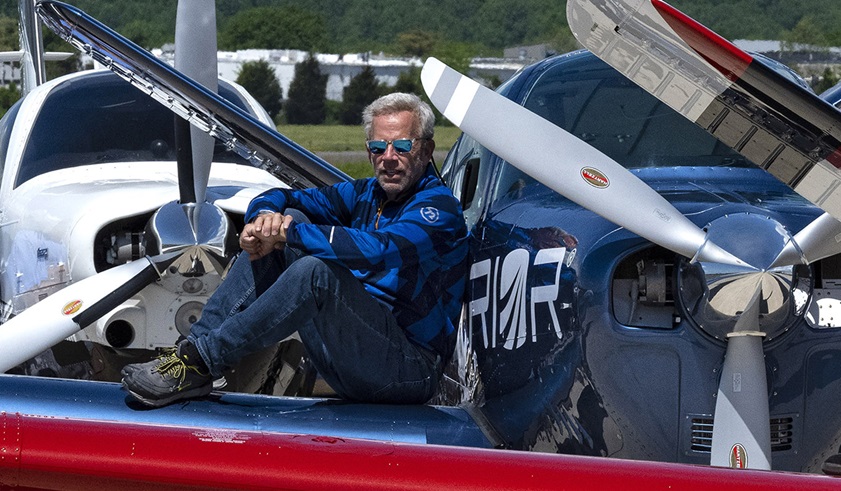'Spectacular' flight across North Pole
Eichhorn logs nearly 20 hours nonstop during Beechcraft Bonanza P35 flight
Beechcraft Bonanza pilot Adrian Eichhorn deflected personal kudos to favorable weather and his support team after completing an “absolutely spectacular” 3,239-nautical-mile flight from Reykjavik, Iceland, across the North Pole to Fairbanks, Alaska, May 11.
As light headwinds turned into tailwinds over the top of the world, the 2016 earthrounder’s fuel calculations allowed for a nearly 20-hour nonstop flight with reserves in a modified 1962 single-engine Bonanza P35.
“There was not a cloud in the sky. It was the most spectacular flight I’ve ever had,” Eichhorn reflected after returning to his McLean, Virginia, home. “If there’s one theme to sum up our entire trip so far, it’s that we’ve been lucky.”
Setting up the polar journey, Eichhorn and Maeda had landed during clear conditions at the typically weather-finicky Narsarsuaq Airport in Greenland, about 674 nautical miles east of their last North America stop in Goose Bay, Canada. Eichhorn said his lucky streak might have begun after the two pilots “got the last drop of gas” for their Bonanzas at the remote outpost. The next fuel shipment wasn’t expected until June.
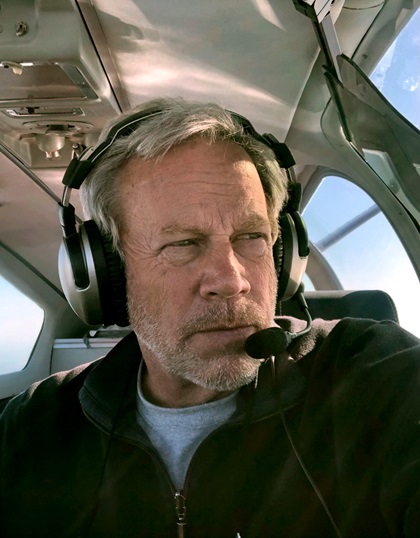
Eichhorn was quick to praise his support crew of Dr. Bill Compton, an accomplished Bonanza pilot who has single-engine transoceanic flying experience and helped with flight management and weather advisories; John Whitehead, a Bonanza owner and recently retired air cargo pilot who assisted with long-range flying techniques, weather, and flight planning; and fellow earthrounder Bill Harrelson, who provided encouragement and experience—and gifted a loud alarm clock to keep Eichhorn awake (should he need it) during the nonstop polar flight.
Eichhorn said that Compton “has been a mentor for a long time about getting the maximum range and efficiency out of the airplane.” Whitehead stayed awake and at the computer during the entire 20-hour flight to relay critical weather support and communications via satellite text messages. The backup was especially crucial when Eichhorn had trouble raising the Nuuk Flight Information Center via high frequency radio to report his position along the polar route. Whitehead quickly forwarded the data on Eichhorn’s behalf. “As I’m getting tired and experiencing other things, he’s monitoring my fuel flow, what my ETAs were, and other things. John was my ops guy and he made sure I was safe to make this flight.”
Fellow Virginian Harrelson, who completed a westbound circumnavigation in 2019 and a 2015 polar circumnavigation in a modified single-engine Lancair IV, has been helping Eichhorn plan the North Pole flight for the past four years. “Bill’s research was invaluable,” Eichhorn said. “The fees, the restrictions, which airports have fuel and which don’t. Oh my God, I can’t tell you how valuable his support was. He’s the kind of guy that if I say, ‘Hey Bill, I’m going to try and beat your [world] record,’ he asks, ‘How can I help you?’”
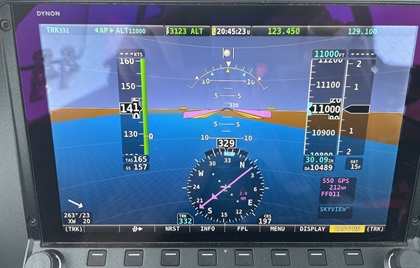
Kudos after the flight included well wishes from Superior Air Parts Inc., the parts supplier for Pinnacle Aircraft Engines which overhauled the 300-horsepower Continental IO-550B engine, and ran without a hiccup. “Knowing what this flight meant to him, we are all extremely proud and happy for Adrian’s success,” said Superior Air Parts Sales and Marketing Vice President Scott Hayes.
Lightspeed Aviation Inc. President Allan Schrader and Executive Vice President Teresa De Mers called Eichhorn via satellite phone when was over the North pole to offer immediate congratulations, and American Bonanza Society leaders Tom Turner and Whit Hickman followed up with emails. The aircraft, known as Gina, previously achieved a Silver Lindy award at 2018 EAA AirVenture.
Eichhorn said the one variable out of his team’s control was the weather, and it, too, cooperated. “No icing, no turbulence, and no wind. Cold temperatures and unlimited visibility. I realized how lucky I was and how fortunate I was to take a trip in a general aviation airplane made in the 1960s. It shows the capability of what we can do with our aircraft if we put our mind to it,” he said by telephone.
A week after the flight Eichhorn was still analyzing data from the zone of confusion at the North Pole where magnetic headings dip and dive while the aircraft remains straight, level, and on track. “We’ve all heard what happens when you are on top of the North Pole. All of the flight instruments kind of take a time out above the pole,” at a critical junction 10 hours into the flight precisely when go/no-go fuel decisions had to be made. Should he continue toward Fairbanks or divert elsewhere, and if diverting, how could he determine which direction? Avidyne navigators and triple Dynon displays provided situational awareness and engine management information.
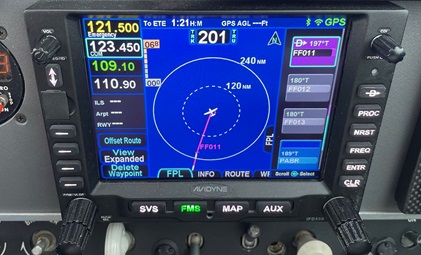
“You’re going to True North, past Magnetic North, and the deviations are huge, like about 40 degrees,” which is quite different than the magnetic variations in the teens or less, typically found in the middle latitudes. Private pilots might remember from ground school that the magnetic declination is the direction and the amount of variation between those two points, with the Geographic North Pole located about 750 miles north of the Magnetic Pole.
“Here you are, flying a heading of 330 degrees and you’re tracking 180 degrees on the ground,” he explained. “I think I had 12 GPS signals showing up” on the instrument panel displays “going over the pole when they momentarily lost position but came back. The problem is that your airplane is getting magnetic information,” which contradicts satellite data and can lead to disorientation. The situation becomes deadly serious when the next airport is hundreds of miles away past glaciers, ice floes, and other inhospitable terrain.
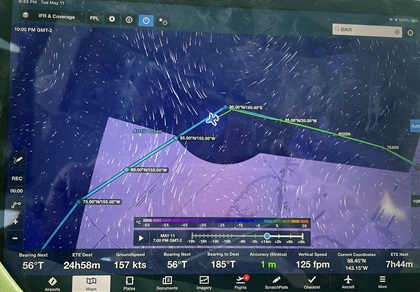
“The most valuable thing in the cockpit for backup navigation was the iPad with ForeFlight displayed and hooked up to the Stratus 3” ADS-B receiver. “It was the only thing during the entire trip that was dead-nuts accurate because it wasn’t getting contradicting information. That, and my backup attitude indicator, were the keys,” he said.
Two low-pressure systems—one over Russia and the other atop Canada—provided the final backups.
“I’d been watching the winds for two months prior to the flight and almost every day there was a [significant] headwind going westbound” that would have challenged the flight’s endurance, he recalled. During the departure, the weather system over Canada produced a “light headwind,” and when Eichhorn crossed the pole, he had a tailwind. “I was extremely lucky and blessed with good weather and favorable winds. That’s the thing that’s going to stick with me for a long time.” Despite the challenging moments, Eichhorn said the journey was “simply amazing. To actually cross over the top of the earth was just amazing.”
